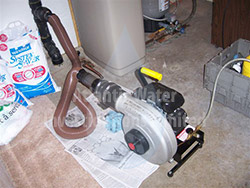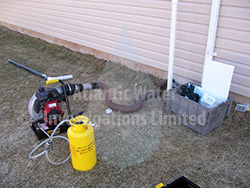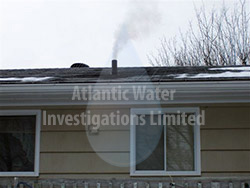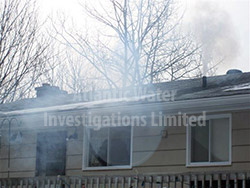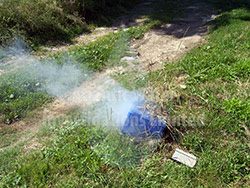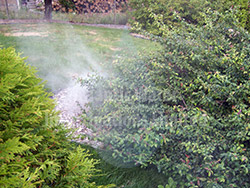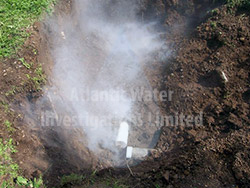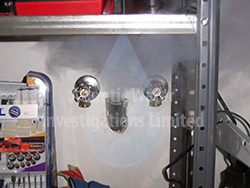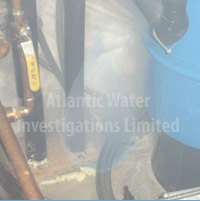
 BBB RATING: A+
|
 |
|
||||
|
|
|
|
|
|||
|
Septic Systems Smoke Testing :: Interior Smoke Testing Before Smoke testing can take place local police and fire agencies must be notified, as well as any potential residential or industrial connections to the line being tested.
Smoke testing may also be used to locate air quality and sewer system integrity problems in buildings. Smoke is generated by the same methods as exterior smoke testing, however, smoke is usually injected into the building or residence through a sewer main, or a sewer plumbing vent or fixture. Smoke will travel through sewer vent systems and through the air spaces in sewer lines, and will emanate from any leaks in the system. Smoke has the ability to travel through wall cavities and annular floor/ceiling spaces. By visually tracking the flow of smoke through the system, integrity problems could be identified. Typical findings from an indoor smoke testing program may include:
Interior Smoke Testing Smoke Blower Leak Detection Test of Sewer Gas Odour From Sewer Lines Atlantic Water Investigations Limited can conduct a smoke blower leak detection test of sewer gas odour from the sewer lines for monitoring purposes to see if smoke may discharge within the vicinity of the building in the areas with pungent odour. Atlantic Water Investigations Limited uses the Hurco Power Smoker 2 unit which is designed for light duty residential applications to heavy duty commercial applications (and can be used in a building) and provides up to 700 CFM (cubic feet per minute) of forced air. CFM can be varied by throttle control. This provides an easy, controllable way to smoke test. No adding smoke candles for additional test time or waiting for smoke candle to burn out when you are finished. The power smoker is a portable unit operated by a gas powered blower with 10 feet of flexible 3 inch diameter hose which can be connected to a pipe or duct work or lines leading into tanks to check for leaks at connections into tanks.
Highly visible smoke readily blends with air and gases, simplifying the observation of airflow patterns or quickly pinpointing leaks. It does not support combustion or leave a visible residue. Leaks visible without smoke can instantly be seen after smoke is added. The odor of escaping smoke also assists in pinpointing leaks. The tedious and time consuming work for leaks can be eliminated by inducing sufficient smoke to fill an area approximately twice as large as the area being tested. Do not block the vents on the roof for the test, as this will only increase the pressure in the lines. I used to cover them 50 percent with duct tape, but it is not necessary. This gives you just a bit of back pressure and makes the smoke migrate faster through a leak. You want the smoke to travel the full length of the pipes. There is no need to seal off the roof vent stacks as the smoke will back up in the line and into the room where we are adding the smoke if there is no leak. If you block off all the lines, you are going to get smoke coming back at you. If you want to create a little back pressure than you can just sit a coffee can over the vent stack, but it is not needed. Back pressure results from the unit blowing the smoke so we have to throttle it down low.
3 to 3.5 hours continuous time on a gallon of liquid smoke, provides a thick heavy long lasting white smoke. If the unit is run at full throttle, 700 cfm, it can blow traps dry. You want the water in the traps. No need to drain the traps. Where water or liquid flows, if there is a leak in the line or in the traps, the smoke will flow into and out of the area with the leak. It is not necessary to seal off the line leading to the main, but if you do, you definitely need the roof vent stacks open, not plugged. Also, sometimes the leaks are buried in the walls and it may take a while for the smoke to fill voids before it moves out where it can be seen. It is required to generate smoke for at least 15 minutes non-stop. You may find a leak in less time, but I would not be comfortable smoking testing for less time. Search for smoke in a darkened room with a powerful flashlight.
|
|
|||||
|
|
||||||
|
|
|
|
|
|||
|
|
|
|||||
